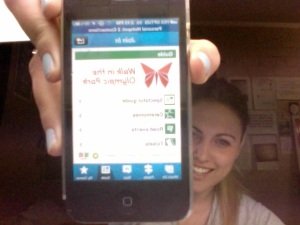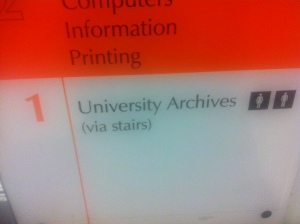When publishing changes, so does society. Investigate and compare the impact of two publication technologies, one pre-1900 and one post-2000, on a specific aspect of society- social relationships.
Media today, is moving at a more rapid pace than ever before. As society shifts in a forward direction, the means of publishing and the publics that are associated with this, alter society’s interactions amongst its audience. The social relationships that audiences form both amongst themselves and with publishing platforms at large have exponentially moved forward with time. Specifically looking at two publication platforms, it is evident that social interaction and relationships have progressed in a number of ways. Gutenburg’s printing press is a pre-1900 publication technology that is comparatively different to today’s social media networks; specifically Facebook, which have forced social relationships to modify.
Publishing involves the distribution and dissemination of information to a public. Although in more conventional terms, it refers to distribution of printed entities, such as books and newspapers, with the introduction of digital media, publishing now also plays scope to digital systems such as the Internet, wherein work can be published in an electronic form. Such an example of this is Facebook, a social media platform that allows for micro-publishing. The public and the process itself face an ever-changing media-scape. With digital distribution now a fast growing reality for publishers, content is available via online delivery. This change in publishing, reflects McLuhn’s (1967) statement that, “our official culture is striving to force the new media to do the work of the old.”
Its ever-changing form affects the publics that receive this data. Although a somewhat ambiguous definition, ‘publics’ largely refers to groupings of people; or the general public. With the rise of social media platforms such as Facebook, targeted publics are forming new relations and social relationships have become subject to this agent of change. Social media networks provide a platform for the viewers to express themselves on an alternate level, which holds substantial influence over the publishing industry as a whole.
The creation of printing as a publishing technology, triggered the disperse of information. It is arguably the Gutenburg evolution of printing which brought on the notion of a public in society (McLuhan 1926). “As an agent of change, printing altered methods of data collection, storage and retrieval systems and communications networks” (Eisenstein 1979, p.xvi). As Eisenstein (2005) exerts, the impact of printing has been noted in almost every field of humanity- political, economic and philosophical.
This power over publics, arguably revolutionized learning as standardization was a consequence of the introduction of printing. The effect on society upon its creation led to the dissemination of texts, from the printing press. One of the most powerful statements made in regards to the print revolution, hailed from Bacon (in Eisenstein 1979, p.43), states “we should note the force, effect and consequences of inventions which are nowhere more conspicuous than in those three which were unknown to the ancients, namely, printing, gunpowder and the compass. For these three have changed the appearance and state of the whole world.”
Moving forward a number of centuries, in today’s society, social networks have become “popular platforms for interaction, communication and collaboration between friends,” (Wilson et al. 2009, p.205). The media cogent of old versus new technology has caused an informed system that present publics can use to mediate online spaces.
With over 310 million users frequenting Facebook on a daily basis (Figure 1), it is evident that the social media platform is making for an interesting publication technology. The use of wall posts, comments, likes and messages, are all ways for the public using Facebook to publish in a micro-publishing style. The socially driven publishing platform serves as a revolutionary dais.
http://www.searchenginejournal.com/the-growth-of-social-media-an-infographic/32788/
Figure 1- The Growth of Social Media (Search Engine Journal 2011)
[Follow Link to Image]
Importantly, and certainly significant in its’ recognition, it should be noted that Facebook, and social media platforms at large are not, by any means, a ‘new’ technology. Rather, they are an evolution in the development of past frameworks. Whilst Facebook lies over the initial character of Gutenburg’s printing press, it has also formed its own set of characteristics that are becoming figures of authority in the emergence of Web 2.0 and the coming Web 3.0.
With print journalism slowly, but surely being pulled apart within the publishing industry, online media is, and continues to, prosper. Publics interact on an entirely other basis within this networked platform, forming a publishing assemblage that works off the power of the public itself. As the rise of new media continues, the growth in social media is exponential.
Given the change in this media environment from the rise of Web 2.0 and the creation and expansion of social media, social relationships are drastically changing from their pre-1900’s counterpart. With a widespread assumption that recent advances in Internet technologies (Web 2.0), particularly the participative Internet (known as social media), have transformed the pattern of communication (Chou et al. 2009), Facebook now acts as not only a platform for social interaction, but also as a publishing medium and a transition platform from print to online media. Although positive in many of it’s aspects, the challenge of copyright is much harder to regulate online, compared to in print, as it is a controversial medium that is not restricted by boarders and laws. The regulating body behind Facebook only holds so much responsibly, and with in excess of 750 million users, it is near impossible to monitor.
In terms of a visually aesthetic platform, social media targets the audience with ease. The ability to just ‘check-up’ on what a friend is up to is appealing to many. The breaking down of the face-to-face interaction however, has left social relationships lacking, to say the least. Structurally cohesive in it’s social links, personal identity plays a large factor in the arrangement of these social platforms and consequently, what content is published within them. Fundamentally altered, from the previous printing press, social media platforms serve also to create a personal identity, which are “both shaped by and shaping social relations of class, gender and generation,” (Moores 2000, p.7).
As historian Elizabeth Eisenstein argued, print revolutionized the world (Brannon 2007 p.353), but it is disputably social media that continues this revolution. Although holding foot to the base of this revolution, researchers claim that online relationships are less valuable than offline ones. Cummings (et al. 2013, p.103-108) proposes that the benefit of an online social relationship wholly depends on whether they supplement or substitute for offline social relationships. With printing press formally still being an advocate for face-to-face communication, reality is, social relationships are now being majorly conducted in an on-line environment. The computer-mediated communication, affects the quality of particular social interactions and relationships (Cummings et al. 2013, p.103-108).
While Gutenburg’s printing press revolutionized the era, Gordon (et al. 2011) realizes that social media networks have done a similar thing, pointing out that “this city for man does not end with the visibly observable. It contains annotations and connections, information and orientations from a network of people and devices that extend well beyond what is in front of him”. Essentially, what Gordan is pointing out here is that as technology becomes integrated into the social and cultural processes of the home and as such, our everyday life, it creates “a new paradigm that outlines the vision of communication media today” (Kenichi 2006, p. 346).
Social media treats all users the same: “trusted friend or total stranger, with little or nothing in between,” (Olsen et al. 2009). Whilst interactions and relationships among people in reality lie on all ends of this statement, Facebook enables the detailed following of friends half-way across the world. It can foster a society where we don’t know the names of our own next-door neighbours (Kaplan et al. 2010, p.68). It seems almost indisputable, that social media, and now, mobile social media, will be the driving force into Web 3.0.
The printing press brought on books and libraries, articles and magazines, however the creation of Web 2.0 has forcibly changed the media scape to construct distribution and aggregation to align with the change. With new technologies and platforms constantly appearing, publics have the ability to become more open and social through the distribution of media (Tomasi 2013). This lies level with Gauntlett (2010), who says, ‘Making is connecting’.
“Public events now occur, simultaneously, in two different places: The place of the event itself and that in which it is watched and heard.” (Scannell 1996: 76, extract in Moores The Doubling Of Place) With social media becoming a significant entity in day-to-day life, shaping our actions, the mobility of media has caused it to become a virtual space in our lives. The ability to be mobile and remotely connected at all times, has left social bonds shifting. Where the former printing press could only be consumed at one moment, the kenesis of new media gives a whole new adaptation to the publishing platform.
Baker (et al. 2009) discusses how mobile devices, such as the iPhone, laptops and iPad, and mobility can “make the mundane interesting, the everyday confronted, providing a new lens for viewing the world through a new camera vision. The sense of intimate connectedness to the message, its subject and the author has emotional implications in everyday art experience, making one feel special, important and inspired.” The overwhelming use of mobile phones to access these platforms
“The culture of the network society is a culture of protocols of communication between all cultures in the world,” (Castells 2007). Media and publishing platforms are qualitatively changing the way we live and our social relationships. As digital media intrinsically weaves its way into modern society, it is an agent of social change. With technology fundamentally shaping the way we act, the spectacle that is social media networks are becoming progressively more cemented into modern culture. As publics move away from former areas of publishing, the shift is focused on a publishing form, most broadly termed ‘networked media’. As Fritjof Capra (1996) suggests, “Wherever we see life, we see networks.”
References
Baker, C, Schleser, M and Molga, K. 2009 “Aesthetics of Mobile Media Art” Journal of Media Practice 10(2&3)
Brannon, Barabara A. (2007) ‘The Laser Printer as an Agent of Change’ in Baron, Sabrina et al., (eds.) Agent of Change: Print Culture Studies after Elizabeth L. Eisenstein Amhurst: University of Massachusetts Press: 353-354
Capra, F. and Castells, M. (2005) Informationalism, networks, and the network society: a theoretical blueprint . Elgar, p.4.
Chou, S., Hunt, Y., Beckjord, E. and Moser, R. 2009. Social Media Use in the United States: Implications for Health Communication. The Journal of Medical Internet Research, 11 (4).
Cummings, J., Butler, B. and Kraut, R. 2013. The quality of online social relationships. Communications of the ACM – How the virtual inspires the real, 45 (7), pp.103-108.
Eisenstein, E. 1979. The Printing Press as an Agent of Change. Cambridge: Cambridge University Press, p.xvi.
Eisenstein, E. 1979 ‘Excerpts’ from ‘Defining the Initial shift: some features of print culture’ in The Printing Press as an Agent of Change Vol 1, Cambridge: Cambridge University Press: 43
Eisenstein, E. 2005. The Printing Revolution in Early Modern Europe. 2nd ed. Cambridge: Cambridge University Press.
Gauntlett, D. 2011, ‘Making is Connecting’, posted on Youtube by davidguantlett01, http://youtu.be/TlyXZoz0aLy , last accessed 23 May 2013
Gordan, E. and de Souza e Silva, A. (2011) Net Locality: Why Location Matters in a Networked World. London: Blackwell Publishing Ltd., p.1
Kaplan, A. and Haenlein, M. 2010. Users of the world, unite! The challenges and opportunities of Social Media. Business Horizons, 53 (1), p.68.
Kenichi, I. (2006) Implications of Mobility: The Uses of Personal Communication Media in Everyday Life.Journal of Communication, 56 (2), p.346.
McLuhan, M. 1962, The Gutenberg Galaxy: The Making of Typographic Man, 1st ed, University of Toronto Press.
Moores, S. (2000) Media and Everyday Life in Modern Society. Edinburgh: Edinburgh University Press Ltd, p.1-7.
Olsen, D. and Arthur, R. 2009. Proceedings of the 27th International Conference on Human Factors in Computing Systems. New York, N.Y.: ACM Press.
Search Engine Journal. 2011. The Growth of Social media. [image online] Available at: http://www.searchenginejournal.com/the-growth-of-social-media-an-infographic/32788/ [Accessed: 09/06/2013].
Tomasi, L. 2013. Moving forward with media: Distribution, Aggregation and the Social . Coffee, Blogs, Publics & Publishing: arts2090, [blog] 23 May 2013, Available at: https://laurentomasi.wordpress.com/ [Accessed: 09/06/2013].
Wilson, C., Boe, B., Sala, A., Puttaswamy, K. and Zhao, B. 2009. User interactions in social networks and their implications. Proceedings of the 4th ACM European conference on Computer systems, p.205.





